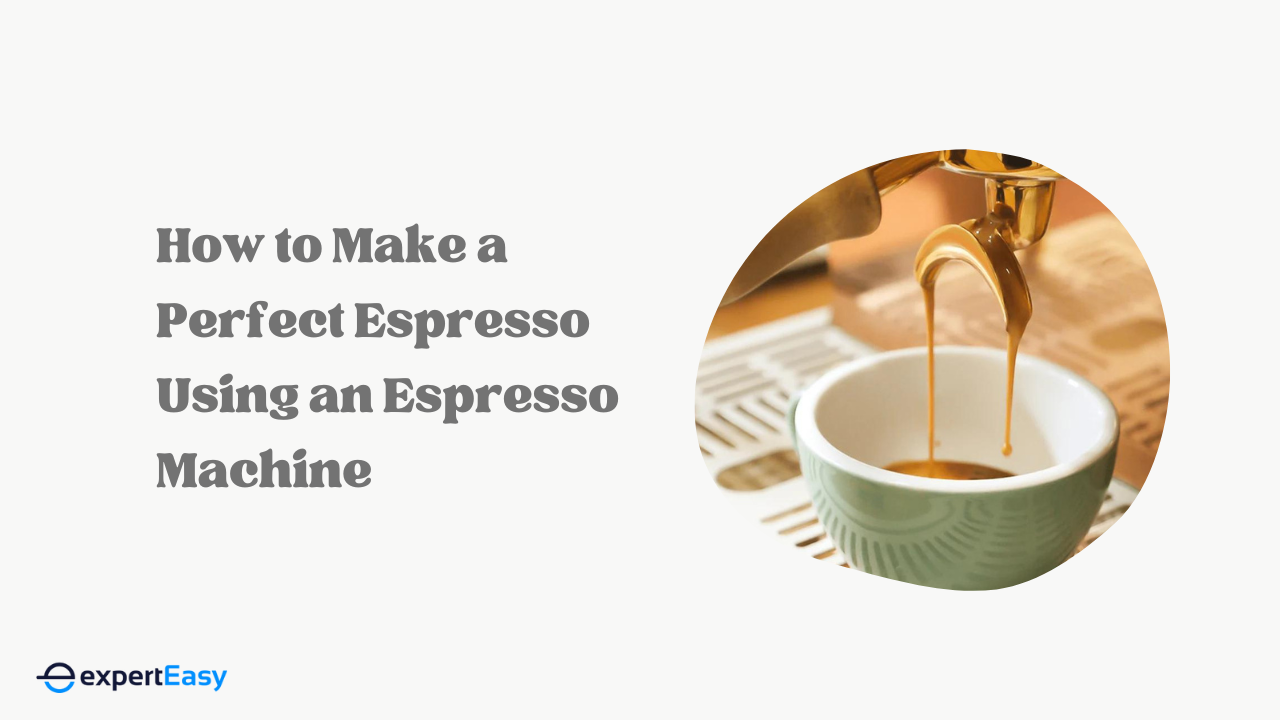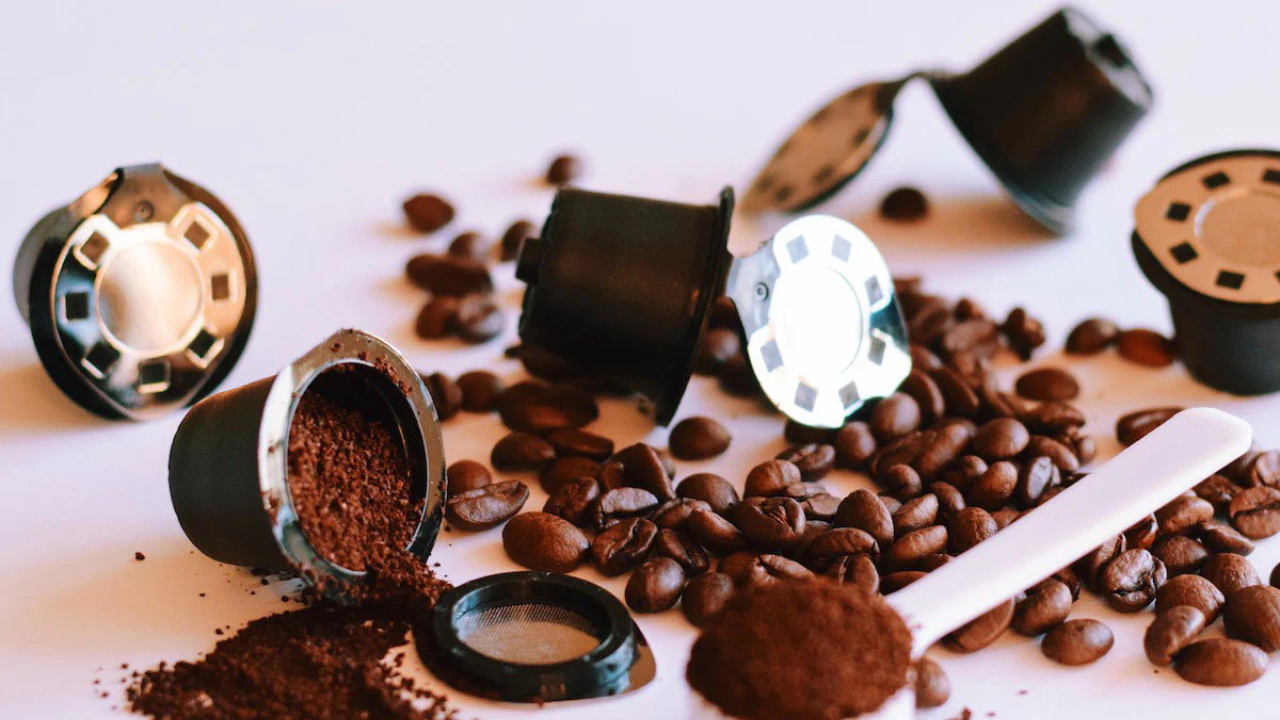Though getting ready espresso from your local coffee shop is surely quick and easy, brewing espresso is always better at home. It brings a kind of fulfillment and creates a connection between you and your brew. But making the perfect espresso is not as easy as reciting the alphabet. These six simple steps should help make the tedious process much more bearable and get you up to speed.
Before that, let's consider everything you need to get started. Ensure you have these requirements so you don't have to pause along the way.
Getting Started
To make the perfect espresso, you must first have an espresso coffee. Then a burr grinder if your coffee machine doesn't come with one. You also need a tamper, a scale, a milk thermometer, and a milk steamer. And finally, your espresso beans. Besides your espresso maker, your coffee grinders and beans quality are of utmost importance. Remember, garbage in, garbage out.
And while scales are not an absolute necessity, making a good espresso requires consistency. A coffee scale gets you used to the right sequence; you know how much coffee to use each time without guessing. Using a scale is a good idea, depending on your practice level.
When it comes to grinding, it is always best to grind your beans immediately before use. This is how you get the best cup of espresso. Of course, you can make your espresso from pre-ground beans. But know that you’ll be limiting the potential, i.e., the flavour, crema, and aroma, of your espresso shot.
Now, let us cut to the chase and get to the six steps for using an espresso machine for a perfect espresso cup.
6 Steps to Make the Perfect Espresso
Pulling a great shot of espresso requires skills and the right equipment. The guide below will get you through the espresso-making process now that you have everything you need.
1. Turn On and Preheat Your Espresso Maker

The first action is to get your machine preheated. Some machines can take up to 25 minutes, so get your machine warming up in advance! Espresso coffee machines, like the Breville Dynamic Duo, feature auto-on and off functionalities that preheat your espresso maker before you begin your day. Preheating prepares the ground for unforgettable espresso-making.
You can speed up preheating by pulling a blank shot. This you will do by omitting the espresso from the portafilter. Pulling this shot straight into your espresso cup does double duty. It does the preheating.
2. Measure and Grind Your Beans

To grind your beans, first set your grinder to fine-grind size. Then place your portafilter on the scale and weigh about 20 grams of ground coffee. You should remember or write down the weight of the ground coffee you used to remain consistent during the dialling-in phase. Take note of the manufacturer’s recommended capacity of your portafilter.

Some espresso machines have an in-built grinder. Thus, you will only need to grind into your portafilter. After the grinding, use your hand to level the coffee in the basket by shaving away the excess coffee. The ground coffee should be evenly distributed in the portafilter to start the next step well.
3. Tamp Your Grounds into a Flat Puck

The tamp is next to get your beans pressured into a puck and ready for brewing. It is necessary to get the coffee evenly distributed before tamping to produce a well-packed and even puck.
Place the group handle or portafilter on a tamping stand or flat surface to begin the tamping. Then use the tamp to apply medium force to compact the grounded coffee. A good rule is to tamp until the grounds stop compacting; this is why tamping must be done on a smooth surface.

After this, polish the espresso puck by spinning the tamper. Then brush off any excess grounds clinging to your portafilter's top or side. You’re now ready to get brewing!

Tamping is a bit of an art that improves with practice. Take note of the bean you're using and estimate how much you tamped. This will come in handy later when fine-tuning the shot. Using a palm tamper instead of a regular tamper can help improve your espresso-making experience.
4. Time to Pull Your First Shot

The first shot will help you form a baseline, so it is important to note the time it took. Record how long it took to reach 2 ounces, which is the typical double shot size. You have made espresso if you have this amount within 20 and 30 seconds per pull.
5. Dial in the Shot
This is the stage for fine-tuning your espresso shot. Take note of the pressure reading if you use an espresso machine with a pressure gauge. This will help you adjust your next shot; if you have too much or too little pressure. Good espresso machines will let you know how well extracted your shot is.

Taste your espresso to decide if your machine does not have a gauge. Changing to a finer ground is advised if your espresso is pulled too early. A coarser grind is the solution if the contrary is the case. A sour espresso indicates it is under-extracted and requires a finer grind. An over-extracted one tastes bitter, and a coarser grind is needed.
It is important to note that when changing the grind size, you must properly discard the first portafilter's worth of grounds. The grounds will be a mix of sizes as soon as you change the setting. If you change roasts, especially light and dark, you'll have to repeat this dialling-in process. Also, darker roasts are more difficult to over-extract than light roasts and benefit from a coarser grind.
If you want to add milk to your brew, the next step is for you. It's unnecessary if you enjoy your espresso pure, like an Italian.
6. Steam the Milk
Milk steaming is important if you make a Latte, Cordato, Macchiato, or Cortadito. A separate milk steamer will be required if your espresso machine does not have a steam wand. If it does, start by pouring cold milk into the milk pitcher.
Then before steaming the milk, turn on the steamer to let out any condensation that may be trapped within. Afterward, put the wand's tip below the surface of the milk, turn on the steamer, and froth the milk until it reaches your desired level. The steamer wand should be below the surface during this process.

With desired frothiness, dip the wand's tip into the bottom of the milk vessel and steam to your desired temperature. All the milk fat will be melted into liquid at temperatures between 55–65°C (139–149°F) to preserve the foam.
You need to practice to get perfect at frothing. For instance, you must learn to get the right amount of heat. The foam won’t stay together with too little heat, and the milk will taste burnt with too much heat.
Final Thoughts
You can make your espresso brewing journey fun and rewarding. The key is to keep an open and patient mind willing to learn. With consistency, you will perfect how to use your espresso machine in no time.
The catch is that once you master the espresso process, other brewing styles become easier to master. Start practising pulling the espresso shot with your espresso machine with these six master steps.







